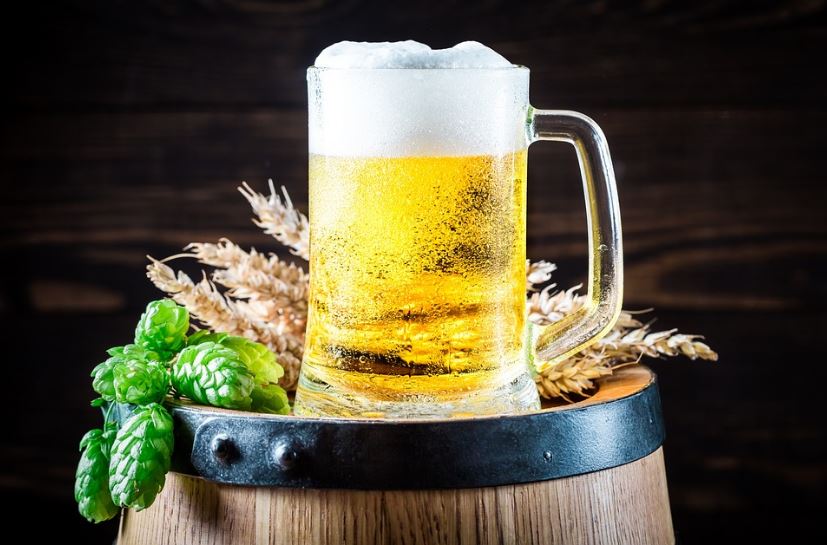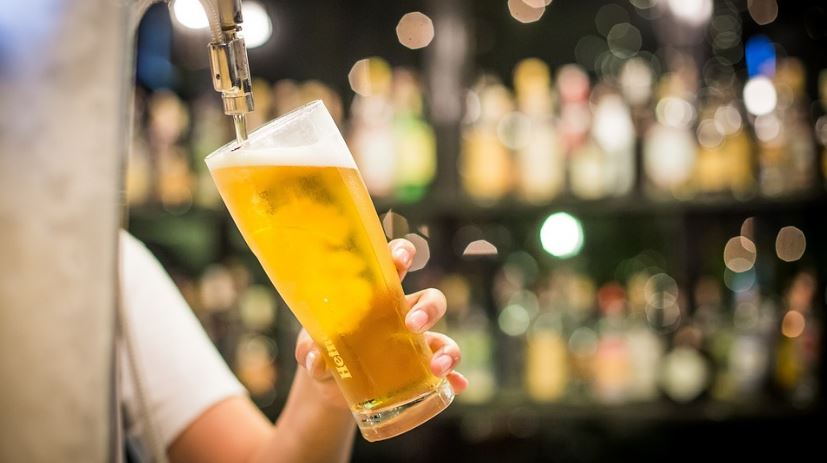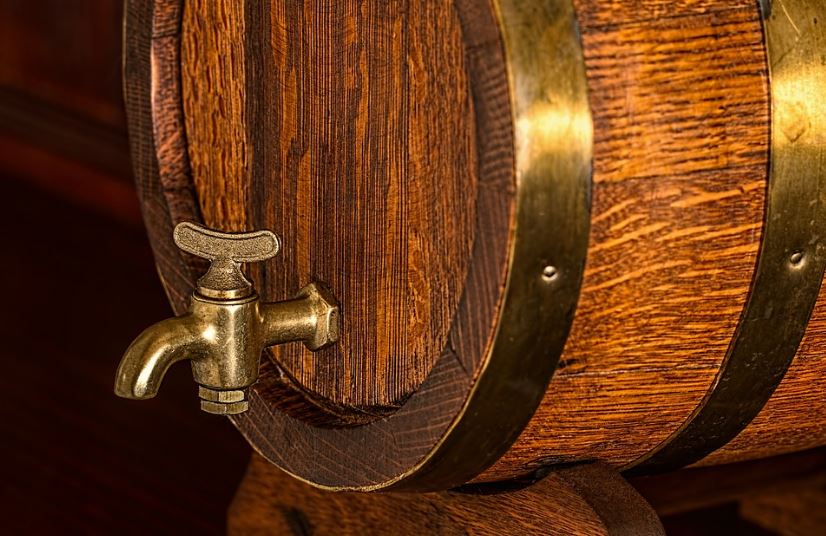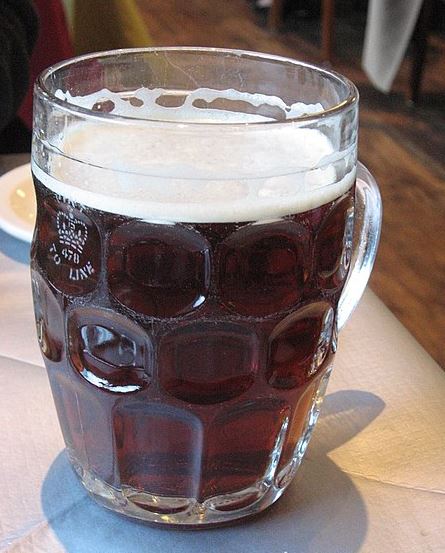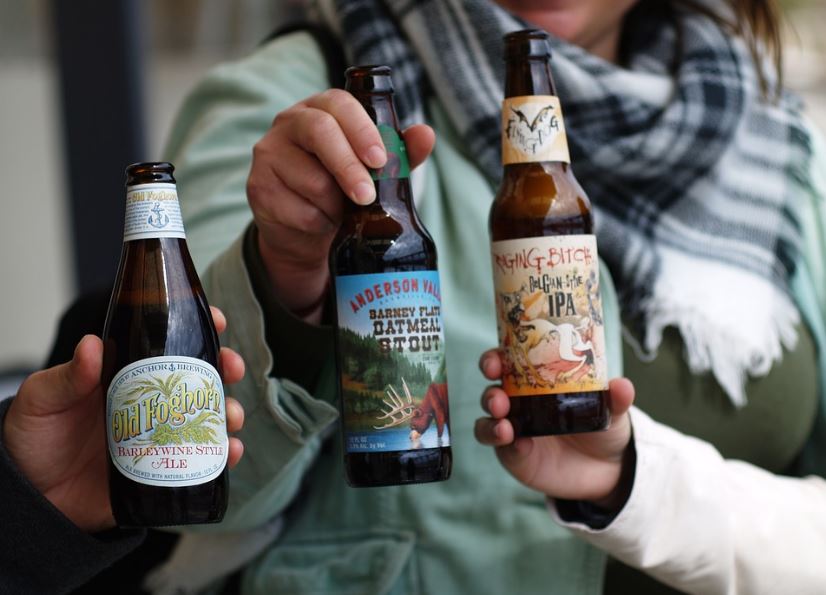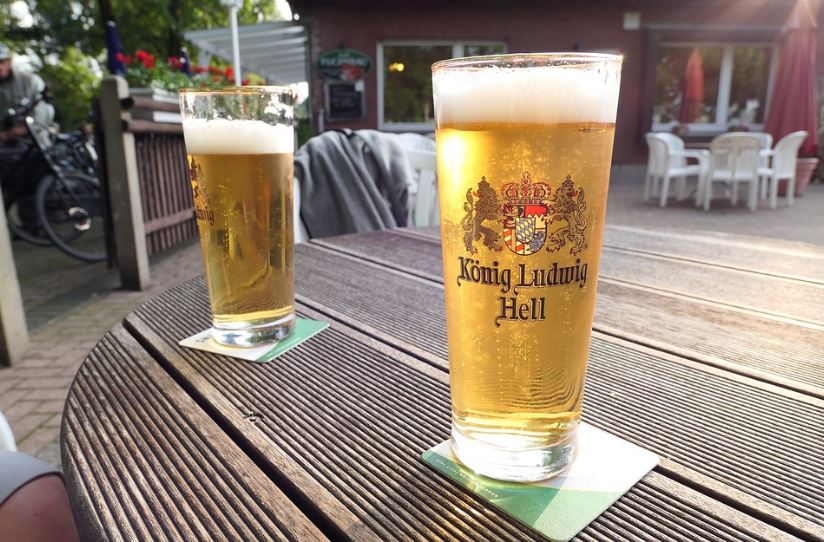If you like beer, you’ve definitely heard the term “draft beer” bandied about a lot. But have you ever questioned what exactly constitutes a “draft” beer? There’s a lot to learn about this popular type of beer, from its roots to the manufacturing process. In this post, we’ll go through the history of draft beer, its difference with other types of beer, and how is it made. So take a seat, pop open a cold one, and prepare to become a draft beer master!
The Origins of Draft Beer
Draft beer has a long and interesting history, and its production method has developed over time to become the favored way in many regions of the world.
Draft beer began to be served from pressurized containers in the early twentieth century, which allowed the beer to be served at a cooler temperature and kept its freshness for longer periods. This new technique of serving beer quickly gained favor, and artificial carbonation was used in the UK by the mid-1930s. This improvement improved the beer’s freshness and flavor even further.
The pressurized draft beer containers are often made of stainless steel or other sturdy materials and can carry enormous amounts of beer, making them suitable for bars, restaurants, and other facilities that serve significant volumes of beer. The pressurized system keeps the beer flowing smoothly from the container to the tap, producing a steady and dependable pour.
The word “draft beer” is almost solely used in modern times for beer served from pressurized containers, whereas traditional cask beer is referred to by distinct terms. It’s simple to see why draft beer has become the favored method of providing beer in many parts of the world. Draft beer is a favorite among beer connoisseurs and casual drinkers thanks to its crisp and refreshing taste, convenience, and dependability.
Keg vs. Cask Beer
A keg is a pressurized container made of stainless steel that is typically used for beer. The flow pipe is coupled to a single aperture in the center of the top. After fermenting the beer, it is artificially pressurized with carbon dioxide or mixed carbon dioxide and nitrogen gas. This keeps the beer fresh and carbonated until it’s time to serve.
Keg beer grew popular in Europe and the United Kingdom, eventually displacing conventional cask beer. One reason for this is that keg beer requires less attention while handling. In contrast to cask beer, which must be held at a specified temperature and consumed within a specific time frame, keg beer can be stored and served more conveniently.
Nitrogen is used under high pressure to dispense some varieties of beer, such as dry stout or other creamy brews. This causes the CO2 to be displaced, resulting in a rich, thick head and a less carbonated taste. The bottled gas used for creamy beer is premixed and typically contains 75% nitrogen and 25% CO2. This is referred to as “beer gas.” It should be noted, however, that this premixed gas works best with creamy beers. The remaining 5% to 10% of the keg can taste flat and lifeless when alternative beer styles are employed.
Casks, as opposed to kegs, are designed to store and serve beer more conventionally. Cask beer is naturally carbonated and is served somewhat warmer than keg beer. Because it does not have the same shelf life as keg beer, it is usually consumed within a few days of being tapped. While cask beer is more difficult to handle, many beer fans prefer it because of its distinct flavor and character.
Draft or Draught Beer? Which is Which?
There’s a reason why many people use the terms “draft beer” and “draught beer” interchangeably: they’re practically the same thing. Both words allude to beer served from a pressurized container, typically constructed of stainless steel. When a beer is ordered, the container is linked to a tap system, which dispenses it into a glass.
In the early 1970s, “draught beer” nearly exclusively referred to beer served under pressure which grew popular, particularly in the United Kingdom and other areas of Europe, and later extended to other parts of the world.
The taste is one of the reasons why many beer enthusiasts prefer draught beer to bottled beer. Because of the method it is brewed, stored, and dispensed, draught beer generally tastes better than bottled beer. Beer made for draught is often naturally carbonated, giving it a fresher taste than artificially carbonated bottled beer. Draught beer is also stored and served at a cooler temperature, which aids in the preservation of its flavor and aroma.
Draught beer is sometimes used to refer to imported beers or “beer on draught” at British places, in addition to its superior flavor. This is because many of these beers are best consumed on tap, as they were designed.
Draft beers are now dispensed from tap lines at many taverns and restaurants. These tap lines are linked to a refrigerated system, which preserves the beer at the ideal temperature until it’s time to pour it. As a result, every pour is ideal, with exactly the proper amount of foam and a consistent taste and scent.
If yo want to learn more about beer foam, you may read our article about the science of beer foam.
Draft Beer vs. Real Ale: Are They the Same?
Real ale is a style of beer that is poured directly from a cask with no additional carbon dioxide or pressurization. In the United Kingdom, the phrase “real ale” is a protected term, and in order to be regarded as a real ale, it must fulfill specific requirements established by CAMRA (Campaign for Real Ale). These conditions include not being pasteurized, not being filtered, and allowing secondary fermentation to occur in the barrel.
Real ale is frequently thought to have a richer, more nuanced flavor profile than other forms of beer. This is because the yeast in the barrel keeps fermenting the beer, allowing it to acquire more complex tastes over time. Furthermore, real ale is frequently served at a slightly warmer temperature than other types of beer, allowing the flavors to come through more fully.
One thing to keep in mind about real ale is that it has a relatively short shelf life, ranging from a few days to a few weeks, depending on storage conditions. This is due to the fact that the active yeast in the cask will continue to ferment the beer, causing it to become hyper-carbonated and sour over time. As a result, genuine ale is frequently offered at bars and other venues with high beer turnover to guarantee that it is enjoyed while still at its optimal freshness.
Why Some People Prefer Draft Over Bottled or Canned Ones
Regarding the taste and quality of draft beer, numerous factors might influence the final product. To begin with, unpasteurized and unfiltered brews are said to have more extraordinary taste than canned or bottled counterparts. This is because the pasteurization procedure, which includes heating the beer to destroy germs and yeast, can also remove some of the flavor and aroma ingredients.
Aside from the brewing process, how draft beer is stored and served can affect its flavor. Keeping the beer in a steel cask or keg can protect it from sunshine and carbon dioxide, which can diminish the beer’s freshness and flavor.
However, there are other more factors to consider. For example, if the beer is not allowed to settle after transportation, it may become agitated and lose flavor. Similarly, if the tap lines are not maintained and cleaned correctly, the beer may pick up off-flavors from residue or germs in the lines.
Temperature is another crucial consideration when serving draft beer. The temperature depends on the type of beer to bring out the best flavor and fragrance qualities. Lighter beers, such as pilsners and lagers, are frequently served colder, whereas darker, more complex beers, such as stouts and porters, are best served slightly warmer. The flavor and aroma will suffer if the beer is done at the incorrect temperature.
You may also read our post about the benefits of drinking draft beer for more information.
How Draft Beers Are Made
The way draft beer and bottled beer are presented may appear to be different, yet the brewing process is the same. Water, malted grains, hops, and yeast are the four essential constituents of beer. Malted grains are commonly made from barley, but other grains, such as wheat or rye, can also be used.
The malted grains are crushed to expose the starch inside to begin the brewing process. Following that, hot water is added to the crushed malt grains, resulting in a mash. Following the conversion, the sugar is extracted from the grains by rinsing them again with water. This process is called sparging and the result is a sweet liquid called wort.
The wort is cooked in a kettle after sparging and collecting it. Because hops give taste and bitterness to beer, the boiling procedure is critical. After the wort has been boiled, it is cooled to fermentation temperature and delivered to a fermentation vessel. This is where the yeast enters the picture. The wort’s sugar is then consumed by yeast, transforming it into alcohol and carbon dioxide.
Depending on the beer style, fermentation can take a few days to many weeks. After fermentation is finished, the beer is refrigerated and aged to allow it to mature. The beer is carbonated and put into bottles or kegs after maturity.
Some beers are filtered using a cold filtration method, while others are not. Any leftover yeast and sediment in the beer are removed by cold filtering. However, unfiltered beers have greater flavor than filtered beers.
In conclusion, draft beer offers a unique and unparalleled experience in terms of flavor and freshness. Whether you religiously love beer or just curious about them, trying a draft beer is definitely worthwhile. With its rich history and numerous brewing methods, draft beer offers a diverse choice of types and tastes to satisfy every beer lover’s palate. So why not give it a shot and enjoy the full flavor of beer in its purest form? Just remember to always drink responsibly and in moderation. Cheers!

